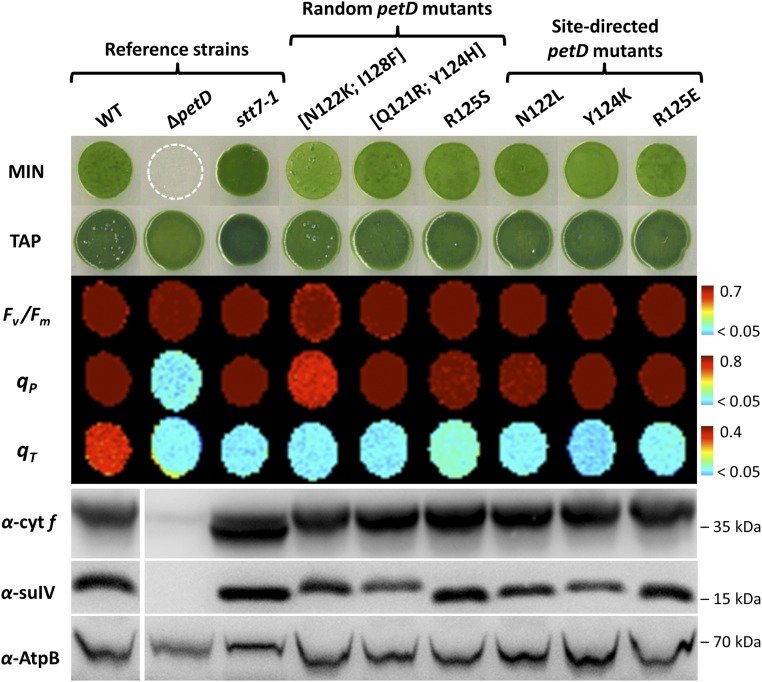Fig. 1.
Random and SD petD mutants are impaired for state transitions despite normal photosynthetic growth, electron transfer, and cyt b6f subunit accumulation. Growth on minimal (MIN, 100 μmolphotons m−2⋅s−1, 2% CO2) and acetate (TAP, 20 μmolphotons m−2⋅s−1) media, maximum quantum efficiency of PSII [Fv/Fm = (Fm − F0)/Fm], photochemical quenching of chlorophyll fluorescence [qP = (Fm − F)/Fm − F0)], qT component of nonphotochemical quenching measured upon anaerobic adaptation in the dark [qT = (Fm − Fm′)/Fm′, see SI Appendix, Fig. S2] and cyt b6f subunits accumulation of the three reference strains (WT, ΔpetD, stt7-1) and six petD mutants affected for state transitions. An antibody against AtpB was used as a loading control. SI Appendix, Table S2 mutants 19 ([Asn122Lys; Ile128Phe]), 13 ([Gln121Arg; Tyr124His]), and 28 (Arg125Ser) were obtained by random mutagenesis. Mutants 22 (Asn122Leu), 27 (Tyr124Lys) and 30 (Arg125Glu) were obtained by SD mutagenesis. All false color images and fluorescence parameters were calculated from chlorophyll fluorescence measurements of cells grown on MIN, except for the ΔpetD strain grown on TAP.

